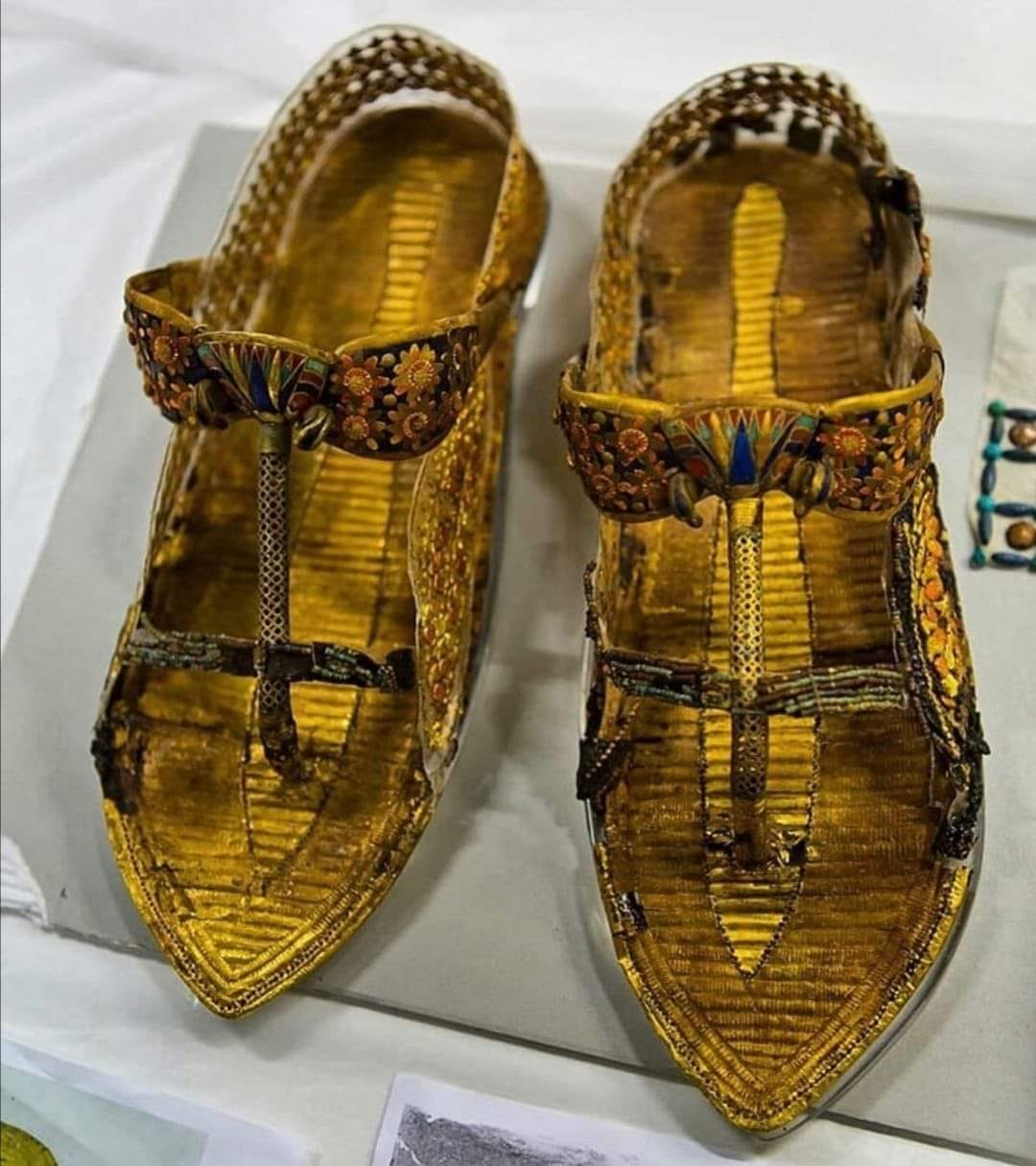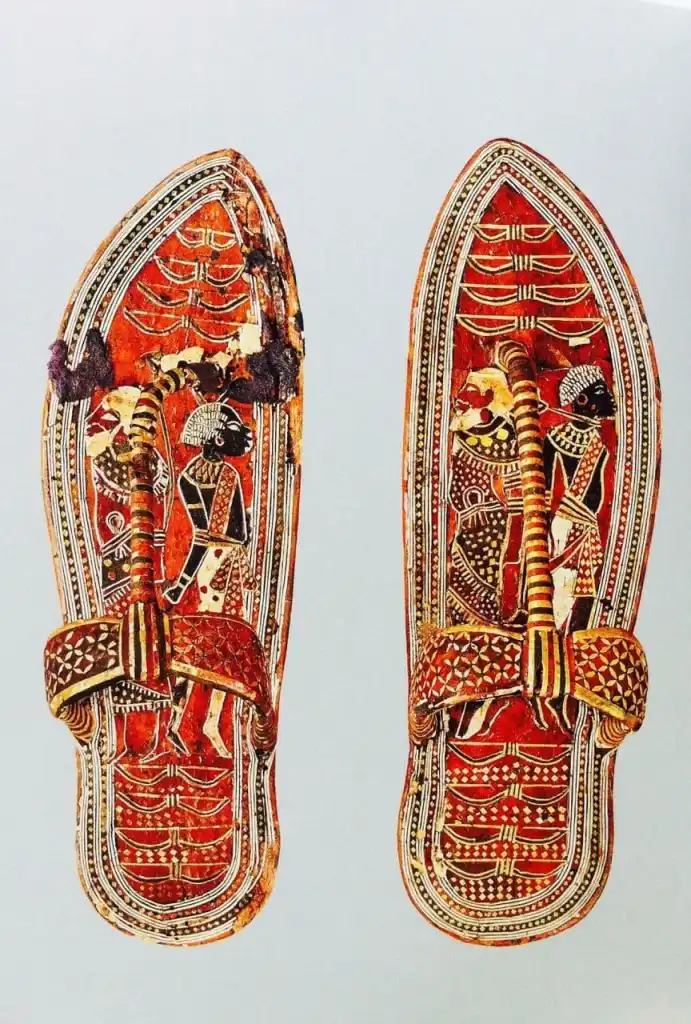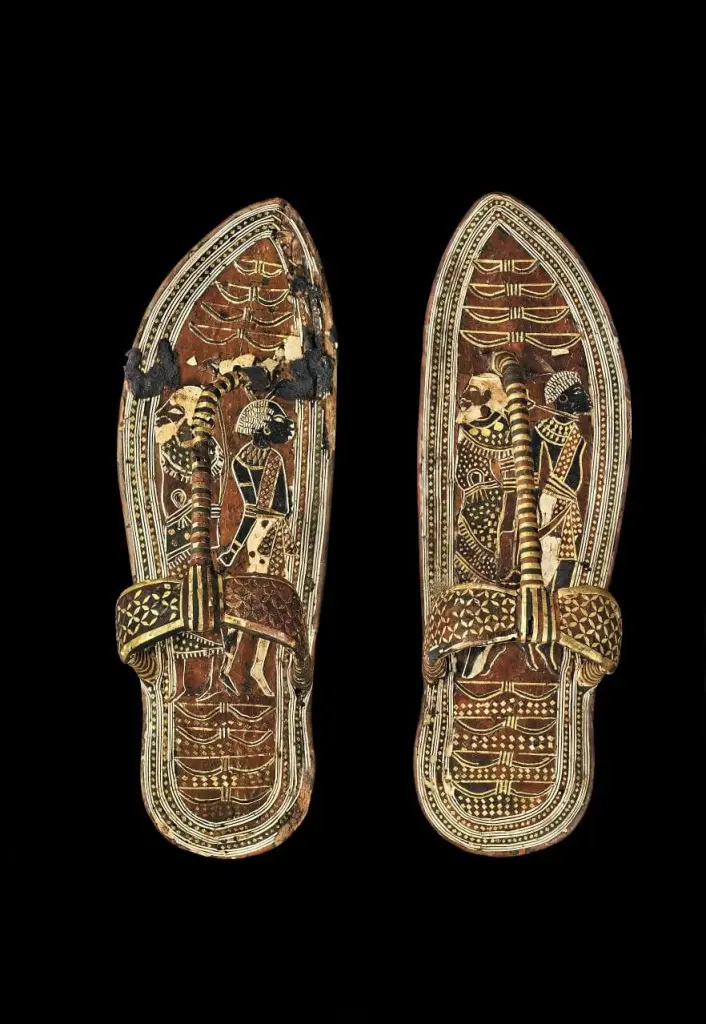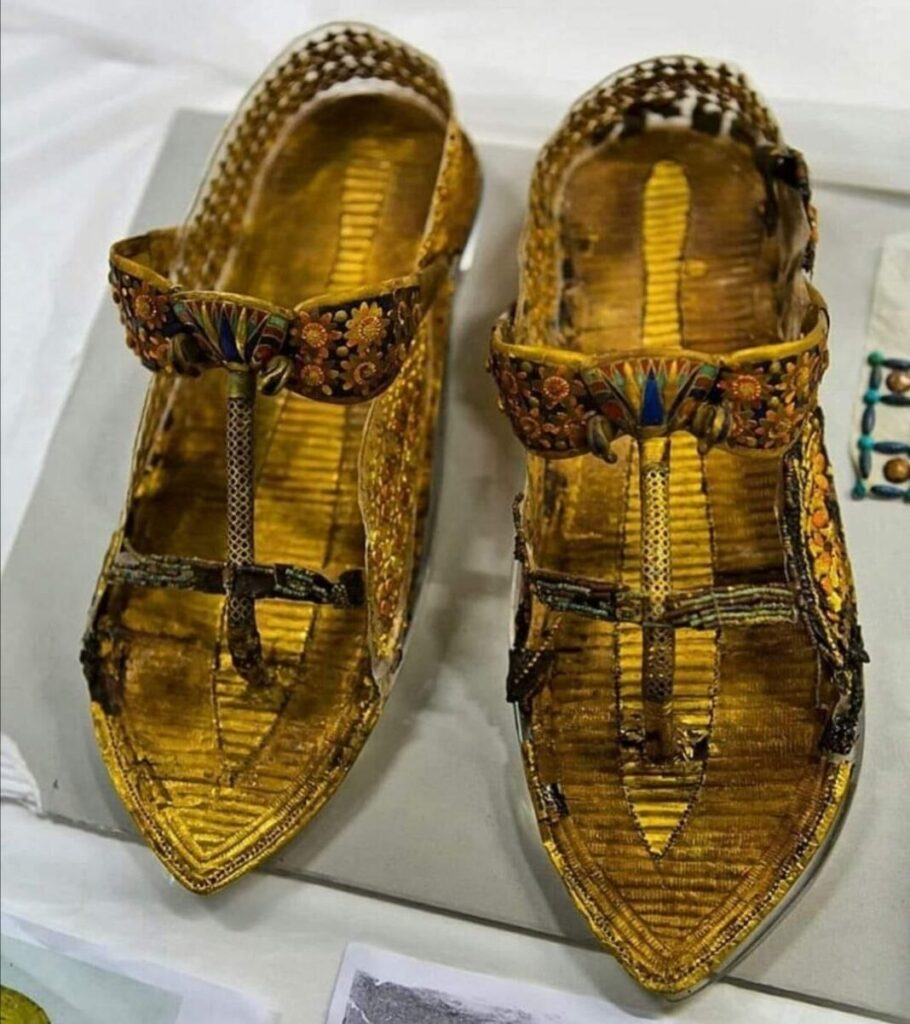In the ancient land of Egypt, during the reign of the young Pharaoh Tutankhamun, a peculiar pair of sandals held a significant role. These sandals were no ordinary footwear; they were adorned with symbols of power and dominance. When the young king wore them, he symbolically trampled upon his enemies, as depicted by the nine bows, representing Egypt’s traditional adversaries, intricately designed on the top and bottom of the sandals.
The discovery of Tutankhamun’s sandals in his tomb has captivated historians and archaeologists alike, offering a glimpse into the rich symbolism and cultural significance of ancient Egyptian footwear. In this blog post, we will delve into the fascinating story behind these sandals, exploring their intricate design, the symbolic meaning they held, and their enduring legacy in the annals of Egyptian history.
Tutankhamun’s Sandal Collection

The tomb of Tutankhamun, discovered in 1922, was a treasure trove of artifacts, including a remarkable collection of footwear. While the exact number of sandals found remains uncertain, it is known that at least eighty samples were discovered. These sandals were meticulously crafted to accompany the young Pharaoh into eternity, each one a testament to the care and attention paid to the afterlife preparations.
Among the collection, some sandals were remarkably well-preserved, while others had deteriorated into mere fragments of foot straps. The most splendid of all were the golden sandals that adorned the feet of King Tutankhamun’s mummy, a clear symbol of his royal stature and the importance placed on his eternal journey.
Diverse Styles and Symbolism

Tutankhamun’s sandal collection included a variety of styles, each with its own unique purpose and symbolic meaning. The most common were sewn sandals made from papyrus strips, likely used for daily activities. These practical sandals were a far cry from the boy-king’s solid gold sandals, which were never meant to be worn in life but were intended for his eternal journey.
However, the most intriguing of Tutankhamun’s sandals were the leather ones, which were meticulously crafted like a mosaic. These sandals featured Syrian and Nubian prisoners on the soles, allowing Tutankhamun to symbolically step on Egypt’s traditional enemies with every step he took. This imagery served not only as a symbolic gesture but also as a powerful reminder of his authority and the protection it afforded him.
The Symbolic Significance of Enemies on Sandals
The depiction of enemies on Tutankhamun’s leather sandals held profound symbolic meaning in the context of ancient Egyptian art and symbolism. Enemies represented the king’s ability to conquer and subdue opposing forces, and their presence on his sandals likely symbolized Tutankhamun’s role as a powerful ruler who successfully defended Egypt against its adversaries.
By showcasing defeated enemies on his attire, Tutankhamun projected an image of strength and power to his subjects and potential challengers. This symbolism served as a visual reminder of his authority and ability to maintain order within Egypt. However, it is essential to recognize that ancient Egyptian symbolism often carried multiple layers of meaning, varying depending on the context.
The Enduring Legacy of Tutankhamun’s Sandals

The story of Tutankhamun’s sandals transcends mere footwear; it encapsulates the essence of a young king’s power, the enemies he symbolically conquered, and the eternal journey he embarked upon. The discovery of these sandals in his tomb has captivated the world, shedding light on the rich tapestry of ancient Egyptian culture and the powerful imagery that defined Tutankhamun’s reign.
The sandals, now residing in the Egyptian Museum in Cairo, continue to captivate scholars and visitors alike. They serve as a tangible link to the past, a testament to the enduring legacy of Tutankhamun and the enduring significance of ancient Egyptian symbolism.
Conclusion
Tutankhamun’s sandals were more than just footwear; they were symbols of power, authority, and the eternal journey of the young Pharaoh. The intricate designs and imagery on these sandals offer a glimpse into the complex world of ancient Egyptian culture, where every detail held profound meaning.
As we uncover the secrets of Tutankhamun’s sandals, we are reminded of the enduring legacy of this remarkable ruler and the enduring fascination with the ancient Egyptian civilization. These sandals, once worn by a young king, continue to captivate and inspire us, reminding us of the timeless power of symbolism and the enduring influence of the past.
